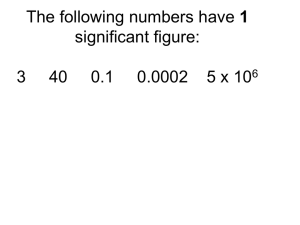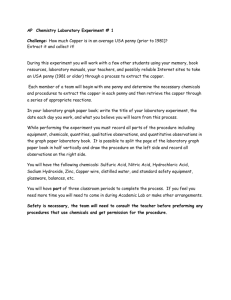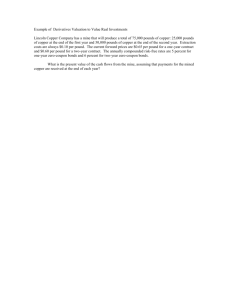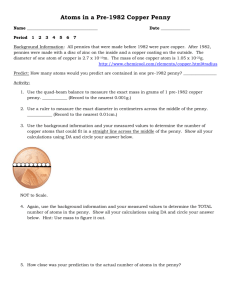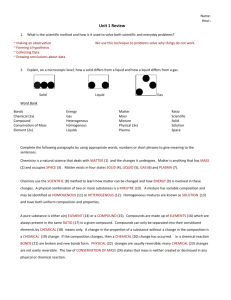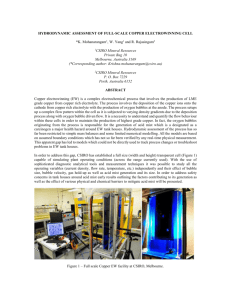Significant Figures
advertisement
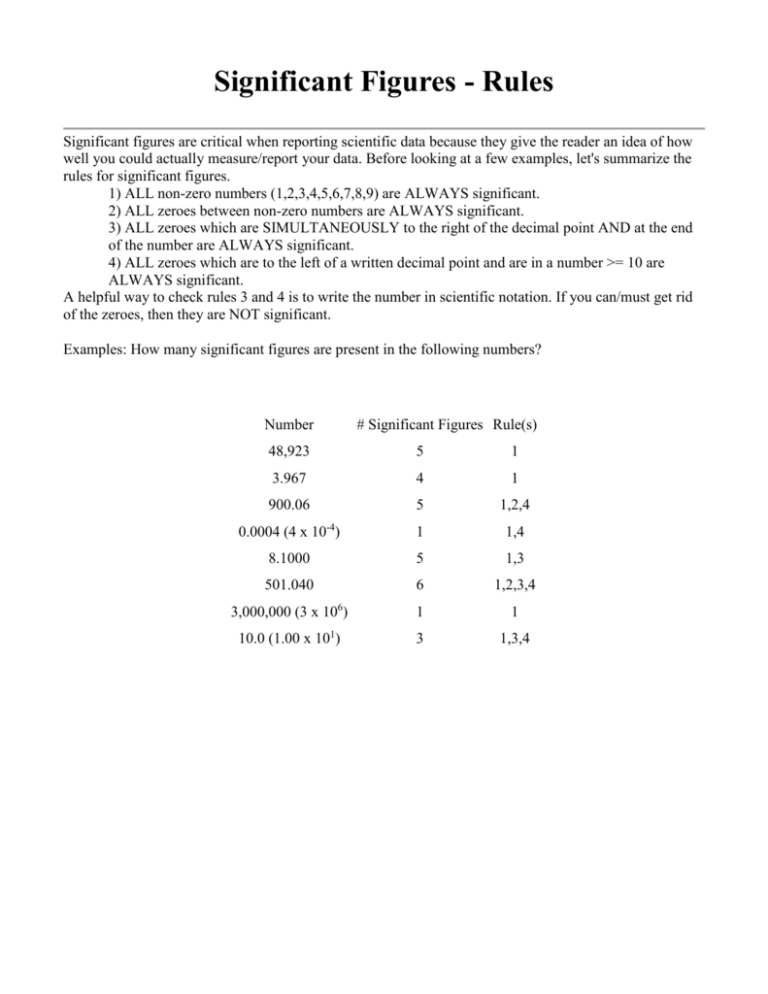
Significant Figures - Rules Significant figures are critical when reporting scientific data because they give the reader an idea of how well you could actually measure/report your data. Before looking at a few examples, let's summarize the rules for significant figures. 1) ALL non-zero numbers (1,2,3,4,5,6,7,8,9) are ALWAYS significant. 2) ALL zeroes between non-zero numbers are ALWAYS significant. 3) ALL zeroes which are SIMULTANEOUSLY to the right of the decimal point AND at the end of the number are ALWAYS significant. 4) ALL zeroes which are to the left of a written decimal point and are in a number >= 10 are ALWAYS significant. A helpful way to check rules 3 and 4 is to write the number in scientific notation. If you can/must get rid of the zeroes, then they are NOT significant. Examples: How many significant figures are present in the following numbers? Number # Significant Figures Rule(s) 48,923 5 1 3.967 4 1 900.06 5 1,2,4 0.0004 (4 x 10-4) 1 1,4 8.1000 5 1,3 501.040 6 1,2,3,4 3,000,000 (3 x 106) 1 1 10.0 (1.00 x 101) 3 1,3,4 Addition and Subtraction with Significant Figures When combining measurements with different degrees of accuracy and precision, the accuracy of the final answer can be no greater than the least accurate measurement. This principle can be translated into a simple rule for addition and subtraction: When measurements are added or subtracted, the answer can contain no more decimal places than the least accurate measurement. 150.0 g H2O + 0.507 g salt 150.5 g solution (using significant figures) Multiplication and Division With Significant Figures The same principle governs the use of significant figures in multiplication and division: the final result can be no more accurate than the least accurate measurement. In this case, however, we count the significant figures in each measurement, not the number of decimal places: When measurements are multiplied or divided, the answer can contain no more significant figures than the least accurate measurement. Example: To illustrate this rule, let's calculate the cost of the copper in an old penny that is pure copper. Let's assume that the penny has a mass of 2.531 grams, that it is essentially pure copper, and that the price of copper is 67 cents per pound. We can start by from grams to pounds. We then use the price of a pound of copper to calculate the cost of the copper metal. There are four significant figures in both the mass of the penny (2.531) and the number of grams in a pound (453.6). But there are only two significant figures in the price of copper, so the final answer can only have two significant figures.



